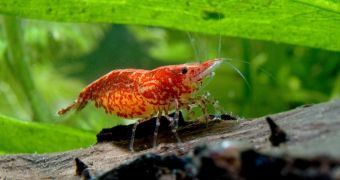Since the red shrimp is an endangered species because of the continuous loss of its unique habitat, scientists would better start finding out all there is to know about it before it becomes extinct.
With support from the National Science Foundation (NSF), molecular biologist Scott Santos and his team at Auburn University, studied the red shrimp in Hawaii, and found that this tiny creature is more amazing than they would have ever thought.
“We started looking at one species of shrimp and what we've found is that we can identify eight potential species based on their genetics,” said Santos.
So they focused not only on the red shrimp, but also on other organisms, that manage to thrive in harsh, brackish pools of water, known as anchialine environments.
Being very close to the shoreline, this ecosystem is very rare, since it shares a connection to the ocean and the groundwater – there are only about 1,000 known in the world and 600 of them are in the Hawaiian Islands.
Santos explains that “the waters in the anchialine pools undergo wide swings in temperature, salinity and exposure to ultraviolet radiation from the sun.
“They are considered extreme environments and there has been a lot of interest in looking at things like microbes from extreme environments because they might hold potential applied value to human welfare.”
The big concern now, it's that these inland lava depressions are disappearing, along with their unique inhabitants.
“They are starting to vanish very, very quickly,” notes the biologist.
“Unfortunately, shoreline development is growing uncontrollably in Hawaii so we're losing a lot of habitat.”
He adds that these tiny creatures could actually teach us a lot about survival, even if their habitats are in danger.
“As a child in Hawaii, I grew up exploring,” he recalls, and “those experiences shaped my direction and interest in science.”
Once Santos grew up and became a molecular biologist, he decided to study these amazing creatures and their environment.
Apparently, the red shrimp is the perfect pet, since it can live in a fish tank for years and never need food nor a change of water, its only requirement being a little sunshine.
“Economically, they are being sold as aquarium pets, but culturally, these were organisms used by the native peoples, either in fishing or in stories.”
Santos said that now, studying these animals as well as other creatures that live in this environment, has become a race against the clock, since their habitat might not be here for long.
“I love working on this,” said Santos.
“We're very interested in understanding what's going on with this ecosystem that is characterized by these little shrimp, and there are many things we're starting to discover.
“It feels good knowing that my nieces and nephews might benefit from the work I'm doing to help preserve these ecosystems for future generations.”
Watch Scott Santos' interview for Science Nation:

 14 DAY TRIAL //
14 DAY TRIAL //